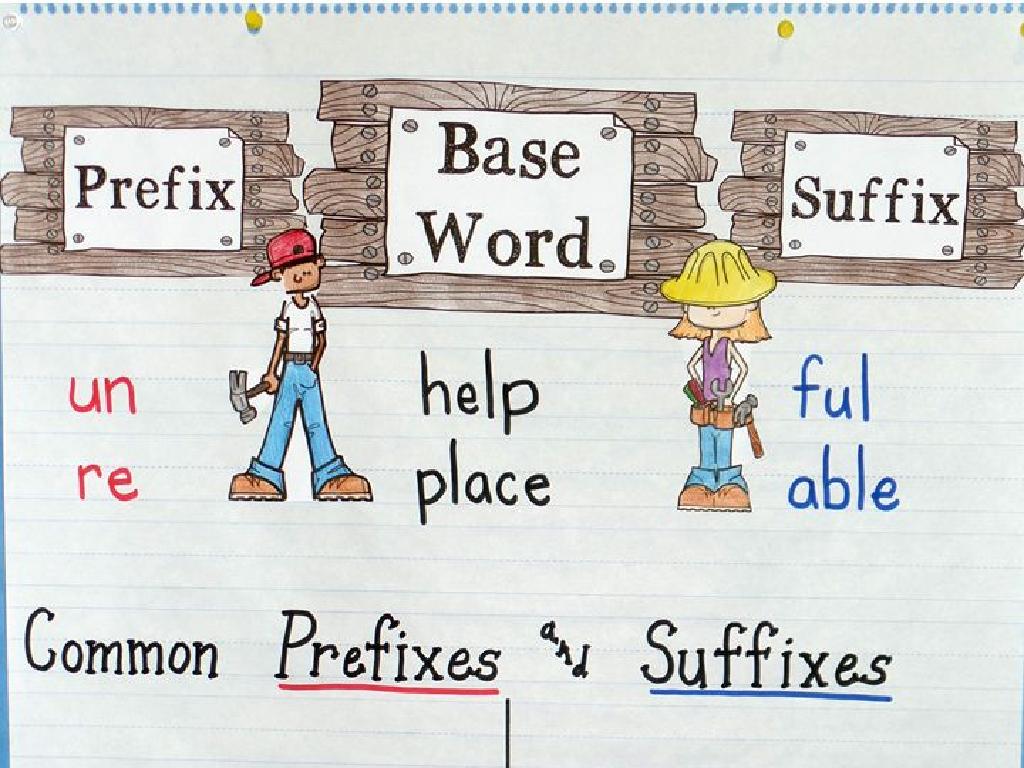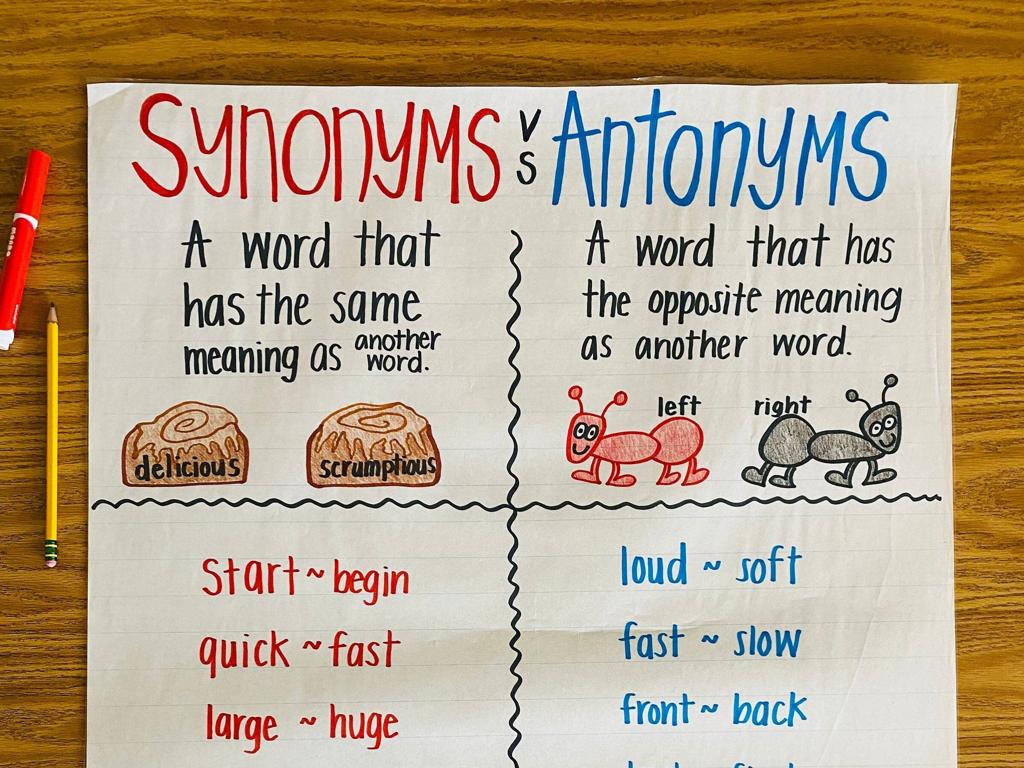Rules And Laws
Subject: Social studies
Grade: Kindergarten
Topic: Civics
Please LOG IN to download the presentation. Access is available to registered users only.
View More Content
Learning About Rules and Laws
– What are rules and laws?
– Rules at home and school
– Like cleaning up toys or raising hands
– Why rules are important
– They help us live together peacefully
– Rules keep us safe and happy
|
This slide introduces the concept of rules and laws to Kindergarten students. Begin by explaining that rules and laws are guidelines everyone follows to make sure we all get along and stay safe. Give examples of simple rules they might follow at home, like cleaning up toys, or at school, like raising their hand to speak. Discuss why these rules are important, emphasizing that they help us live together peacefully and ensure everyone is treated fairly. Highlight that following rules keeps everyone safe and happy. Encourage the children to think of rules they follow and explain how it makes them feel. This will help them understand the purpose and importance of rules in their daily lives.
What Are Rules?
– Rules are special instructions
– Like a game, rules guide us in school and at home
– Examples: ‘Raise your hand’, ‘Wait your turn’
– ‘Raise your hand to speak’, ‘Wait in line’ are rules in class
– Rules keep us safe and happy
– Rules show us what to do
– They help us understand how to act
|
This slide introduces the concept of rules to Kindergarten students. Begin by explaining that rules are like instructions in a game that help everyone know what to do. Provide simple, relatable examples such as raising a hand to speak and waiting for a turn in line, which they encounter in their daily school routine. Emphasize that rules are there to keep everyone safe and happy, and to make sure things are fair. Encourage the children to think of other rules they follow at home or in school and discuss why those rules are important. This will help them understand the purpose of rules and how they benefit everyone.
What Are Laws?
– Laws are rules for everyone
– Leaders make laws for safety
– Examples: ‘Wear a seatbelt’
– Keeps us safe in cars
– Examples: ‘Stop at red lights’
– Helps prevent accidents
|
This slide introduces the concept of laws to Kindergarten students by comparing them to rules they are familiar with but explaining that laws apply to everyone in the country. Emphasize that laws are made by our leaders, such as mayors, governors, and the president, to help keep everyone safe. Use simple, relatable examples such as wearing a seatbelt to stay safe in the car and stopping at red lights to avoid accidents. Encourage the children to think of laws as big rules that help protect all of us and keep our communities happy and secure.
Why Follow Rules and Laws?
– Rules keep us safe
– Like stopping at a red light
– They help us make friends
– Sharing toys shows kindness
– They make our community great
– Clean parks are nice to play in
|
This slide aims to teach Kindergarten students the importance of rules and laws in simple terms. Explain that rules are like instructions that help keep everyone safe, such as stopping at a red light to avoid accidents. Emphasize that following rules helps us get along with others, like when we share our toys, it shows we are kind and makes playing more fun for everyone. Highlight that when everyone follows rules, our community becomes a better place, such as when we keep our parks clean, they are nicer for everyone to play in. Use examples that are relatable to their daily lives to make the concepts more understandable.
Classroom Rules: Why They Matter
– Listing our classroom rules
– Understanding rules importance
– Rules help us stay safe and learn better
– Feelings when rules are followed
– Happy, safe, and ready to learn!
– Discussing rule-following benefits
– A smooth class where everyone is respected
|
This slide is aimed at engaging kindergarten students in a discussion about the classroom rules. Start by listing the rules that the class should follow. Explain why each rule is important, emphasizing how they help maintain a safe and conducive learning environment. Ask the children how they feel when everyone follows the rules, guiding them to express feelings of happiness, security, and readiness to learn. Highlight the positive atmosphere created when rules are followed, such as everyone getting along and having a chance to participate. Encourage the students to think about how following rules benefits everyone in the class.
Activity Time: Creating Our Class Rules
– Let’s make a rules poster
– Think of a rule you want
– Maybe a rule about sharing or listening?
– Draw yourself following the rule
– Use colors to show you following your rule
– Share your rule with the class
|
This activity is designed to engage students in the concept of rules by allowing them to participate in the creation of their own classroom rules. It will help them understand the importance of rules and how they contribute to a harmonious classroom environment. Provide them with art supplies for their drawings. Encourage creativity and ensure that each student understands the rule they have thought of. After they finish drawing, create a sharing circle where each student can present their rule and the drawing. This will not only help them articulate their thoughts but also practice public speaking in a supportive setting. Collect all the drawings and create a poster to display in the classroom as a constant reminder of their contribution and commitment to the class rules.
Sharing Our Classroom Rules
– Share our created rules
– Explain why each rule matters
– Helps us understand the rule’s value
– Vote on rules for our poster
– Choose the best rules together
– Display our chosen rules
– Our poster will remind us daily
|
This slide is for a class activity where students will engage in a democratic process to decide on the rules for the classroom. Each student will have the opportunity to present a rule they think is important and explain why it matters to the class. This exercise helps students understand the purpose of rules and the importance of making decisions together. After sharing, the class will vote on which rules they want to add to a classroom poster, which will serve as a daily reminder of their collective agreement. The teacher should facilitate the sharing process, guide the voting, and ensure that every student’s voice is heard. Possible activities include role-playing to demonstrate the rules, drawing pictures of the rules in action, or creating a colorful poster as a class project.
Wrapping Up: Rules and Laws
– Great job learning today!
– Rules and laws help us
– They keep us safe and happy
– Following them is important
– It’s how we show we care for others
– They make our world better
– A better place for all our friends and family
|
Congratulations to the class for their hard work in understanding the concepts of rules and laws. Emphasize the importance of these guidelines in maintaining order and safety in our daily lives. Reinforce the idea that by following rules and laws, we show respect for each other and contribute to a harmonious community. Encourage the children to think of ways they can follow rules at home, in school, and in their neighborhood. End the lesson by acknowledging their efforts and participation, leaving them with a sense of accomplishment and a positive outlook on being good citizens.






